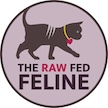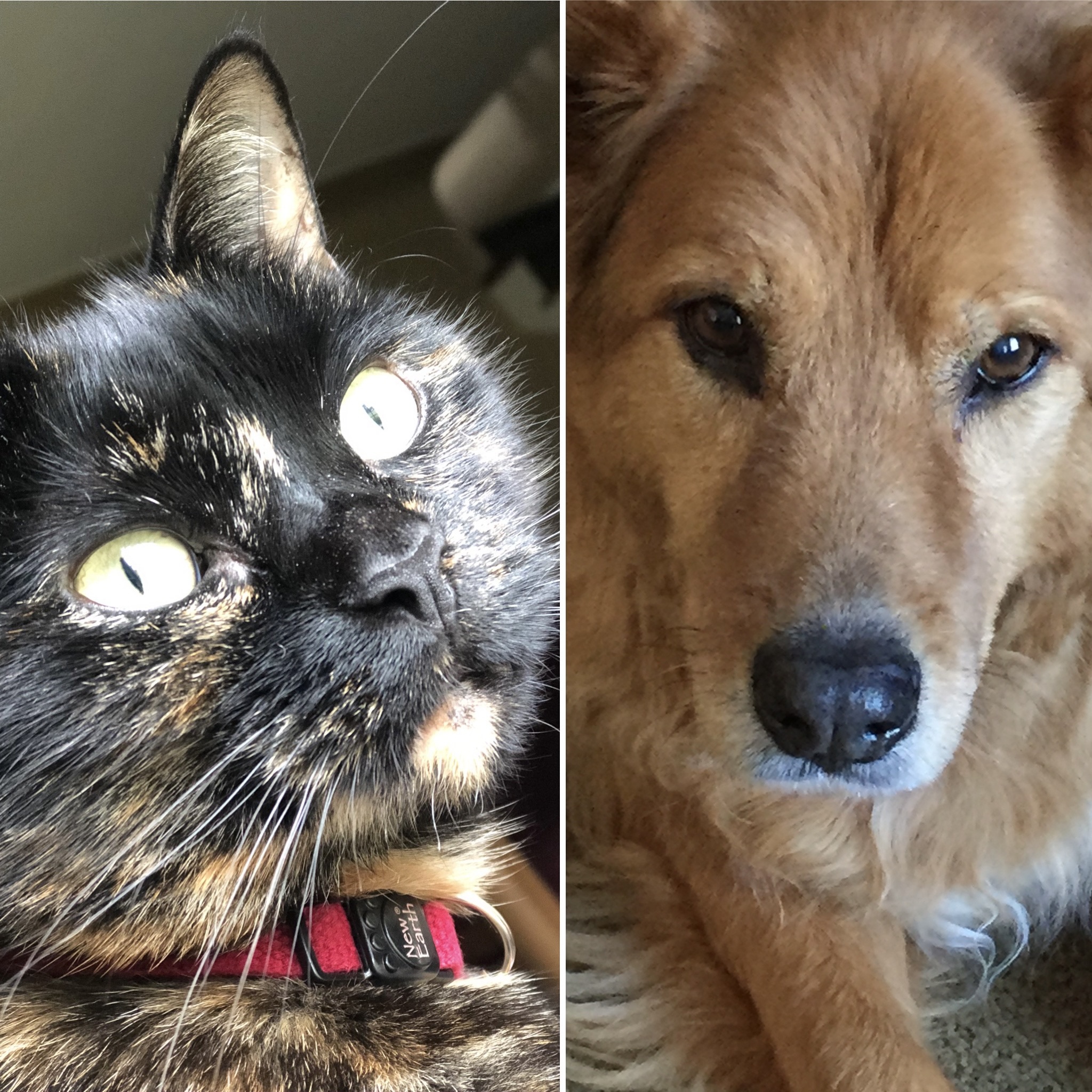It is unfortunate for cats everywhere that the pet food industry and many veterinarians are so dog focused that they seem to forget that cats are not small dogs. Sadly, this is directly related to money. Dog guardians in the US spend almost 50% more than cat guardians do. The multi-billion dollar pet industry is all about the money, so it makes sense that the market share would reflect that as well.
Cat guardians often lament that cats are the “second class citizens” of the pet industry. Walk into any pet store and it’s not hard to see why. Rows of shelves devoted to everything imaginable for dogs of all sizes with far less variety of cat related items available.
Food trends are also dictated by dogs first, with a seeming trickle down effect to cats. In this post, I am going to discuss some of the ways in which raw feeding cats differs from that of dogs. But first, why do these differences exist? The short answer is because they are two different animals! Cats are not just really small dogs. This may seem obvious, but then again, maybe not.
Cats and dogs are the two most popular animals that we bring into our homes as companions. They both benefit from a raw food diet, but this does not mean that they can be fed the same. I’ve said it before and I’ll say it again–cats are not small dogs. There are some important differences between dogs and cats that can help us understand why they need to be fed different foods and in different ways.
Differences in digestion
carbohydrates
One big difference between cats and dogs in terms of digestion is related to carbohydrates. Dogs have the capacity to digest carbohydrates much more easily than cats. They are able to absorb nutrients from carbohydrates more effectively than cats as well. Dogs can eat a more omnivorous diet, whereas cats are strict carnivores. For example, dogs have much more amylase enzymes in their pancreas (see picture below). Amylase is the major enzyme responsible for carbohydrates’ digestion. This means that dogs are capable of breaking down carbohydrates for energy. (There are differing opinions as to how much carbohydrate content dogs should be eating, too, but I will leave that for dog feeders to discuss).
Cats have a very limited capacity to digest carbohydrates. Instead, our little carnivores use a process called gluconeogenesis to convert protein into energy. This is one reason why cats have a higher requirement for protein in the diet as compared to dogs. Cats use protein for both energy as well as tissue repair, growth, and synthesis of other bodily components.

nutrients
There are also some significant nutrient differences. I won’t cover each and every difference, but will highlight some of the major ones.
~Dogs can convert the beta carotene in vegetables into a useable form of vitamin A. Cats cannot. Cats must receive pre-formed vitamin A in the diet, which they mainly get from liver.
~Dogs are able to convert tryptophan into niacin. Again, cats cannot. This is why cats have a higher requirement than dogs for B vitamins, including niacin. Cats need over 4 times as much niacin in their diet as compared to dogs.
~Most people are aware that cats cannot make taurine on their own, this is an essential amino acid that cats must have in their diet. Dogs are able to synthesize taurine. I wrote a love letter to chicken hearts and taurine if you want to read more about its importance for cats.
~Cats also have a greater need for iron in the diet as compared to dogs. Cats need twice as much iron as dogs do. Again, for our carnivores, heme iron from animal based sources is best. Blood, spleen, liver, and red meats are good sources of heme iron.
~There is also an important fatty acid difference. Dogs are able to make enough arachidonic acid (an essential omega-6 fatty acid) from adequate amounts of linoleic acid. Linoleic acid is in plant based oils, such as soybean and sunflower. Cats, however, cannot synthesize arachidonic acid from linoleic acid. They must get arachidonic acid from their food. And where is arachidonic acid found, you ask? In animal based sources—namely, meat, fish, and eggs.
I hope this information helps illustrate why cats cannot be fed as if they are just smaller sized dogs from a digestion and nutrient perspective.
Differences in raw foods
bones
Now let’s look at some of the specific differences in raw foods for cats and dogs. I’ll start with bones. Most commercial raw foods have a bone content of 10% as this is the most common ratio of bone for dogs. However, most whole prey animals that cats naturally eat have a bone content in the range of 4-8%. For example, both mice and rats have 5% bone. And yet, most commercial raw foods for cats have 10% bone just like food for dogs. This is twice the bone content of cats’ natural prey! Some cats are able to tolerate 10% bone, but for others it can cause constipation.
It is also important to pay attention to the size and density of whole bones. Whole raw meaty bones that can be fed to cats are chicken wingtips, wingettes, ribs, and smaller necks; duck and chicken toes; quail bones; rabbit ribs; and of course, whole prey. Feeding larger and/or denser bones to cats increases the risk of chipped teeth. There is a far greater range of bones that can be fed to dogs, which depends on the size of the dog. A Mastiff will be able to eat much larger bones than a Maltese, for example.
plant matter
Many commercial raw foods contain some amount of plant matter. Dogs can benefit from more plant matter than cats. Since plant matter is less expensive than meat, many commercial foods include more than is appropriate for cats (and dogs, for that matter). Cats can benefit from the inclusion of a small amount of plant matter for fiber, typically fed around 1-2% of the diet. But when food has too much plant matter, it will not have enough protein. And as stated above, cats have a higher need for protein in their diet than dogs.
Different feeding practices
number of meals
A common practice with dogs is to feed one large meal daily; however, cats are designed to eat several small meals throughout a day. Feral cats will eat 8-12 small prey animals daily. Cats have relatively small stomachs. They are not able to eat a large meal, i.e., gorge themselves, and then not eat for the rest of the day.
Cats also benefit from getting the moisture content in their food at more frequent intervals rather than one meal to help keep their urinary system properly flushed. With their smaller stomachs, cats will not be able to ingest enough calories or moisture in one sitting. Feeding adult cats 3-4 meals daily is a better practice than feeding once. I previously discussed feeding practices here.
fasting
Another common practice with dogs is to fast them for a digestive re-set or break. This is not appropriate for cats. Cats need to eat daily—and should not fast for prolonged periods of time. For some cats, not eating for as little as 24 hours can be dangerous. Cats have such a strong need for protein that without proper amounts, they will start to use the protein from their own muscle tissues.
transition
This fasting approach is often used to transition dogs to new foods as well. Dogs are fasted and then offered a new food, which they will often accept since they are hungry. As discussed here, cats need a slow transition with many baby steps along the way to willingly accept new foods. You cannot “tough love” a cat into eating; they will not eat simply because they are hungry. They just won’t.
Moisture
Another important difference is the need for moisture in the diet. Cats are designed to “eat their water,” not drink it from a bowl. Cats are descended from desert animals and do not have a strong thirst drive. Unlike dogs, they are not physically efficient drinkers and can never drink enough water to meet their water needs. If fed a dry diet, dogs are able to increase their water intake significantly in ways that cats cannot. (Please note that I am not suggesting that dogs should eat a dry diet. I am simply pointing out that dogs are able to adjust their water intake more effectively than cats.)
So, I hope that you can see that there are some significant differences between cats and dogs in regards to their digestion, nutrient requirements, and feeding patterns. It’s so important to remember that cats are not small dogs and should not be fed as such. Cats are their own unique animal, so you want to make sure that you are feeding your cat like the cat that they are!


